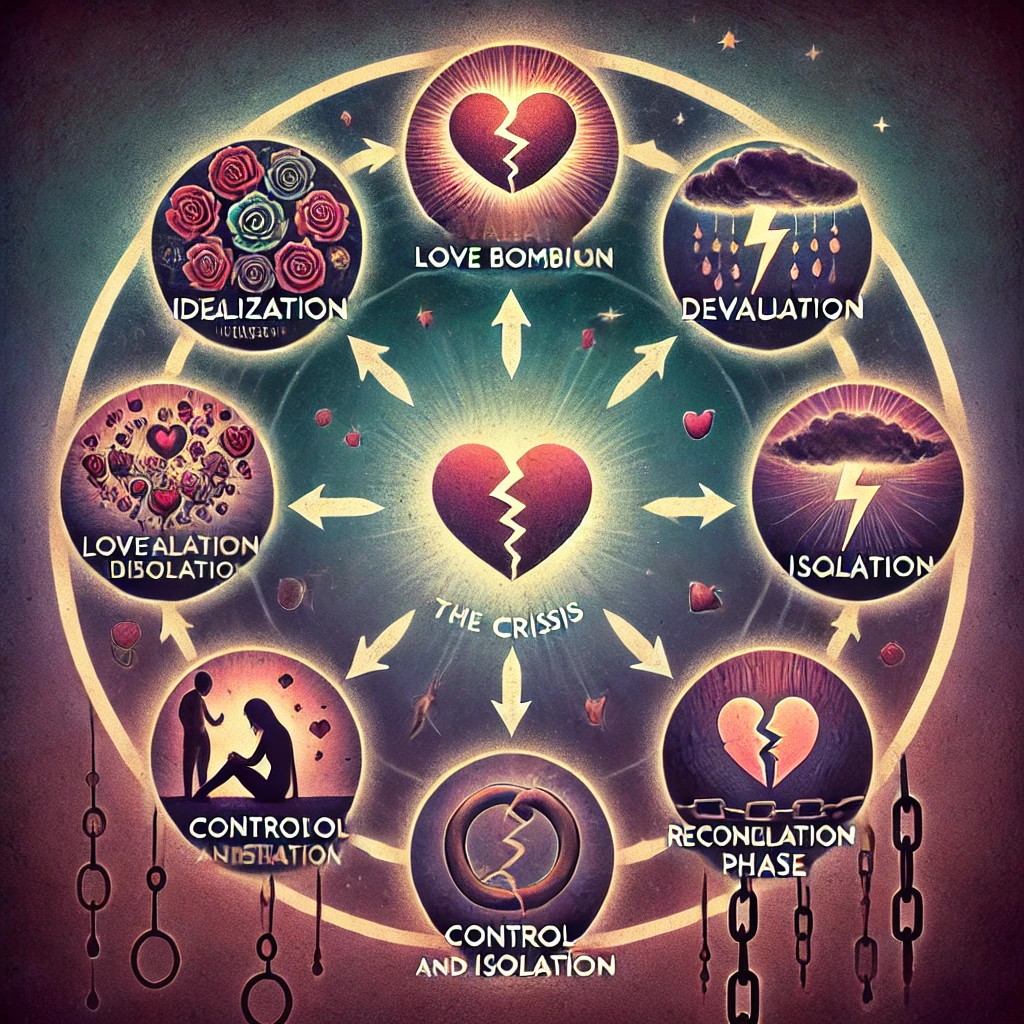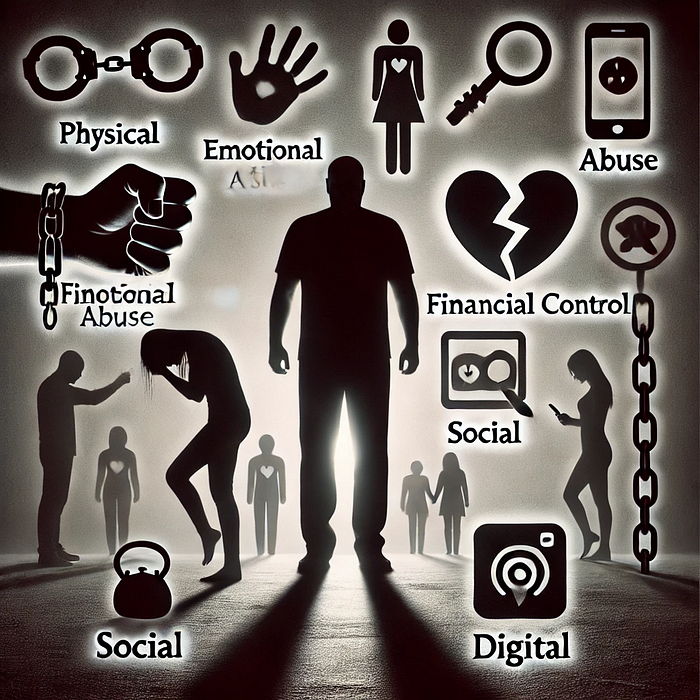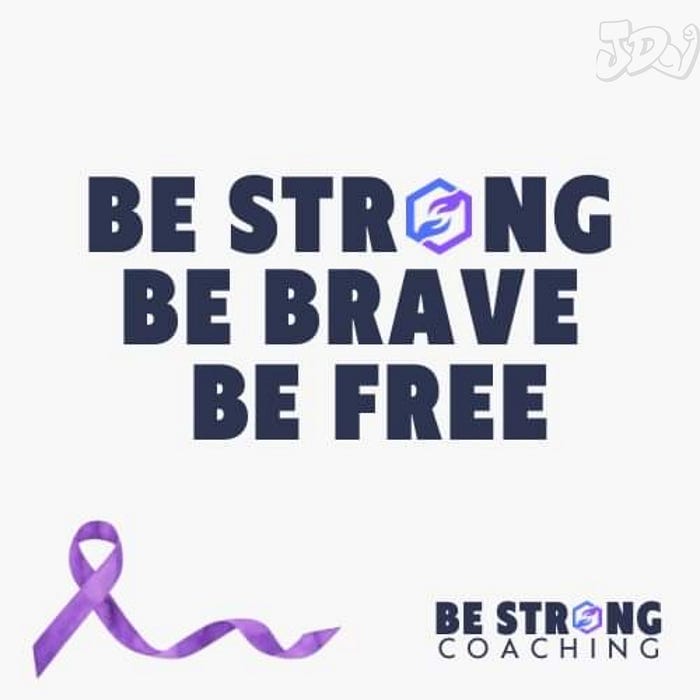I want to acknowledge that this is longer than a typical article. This is a comprehensive exploration of emotional abuse that may take 15-20 minutes to read in full. I decided to keep it as one complete piece to maintain the connections between concepts and provide the depth this subject demands. Consider reading it when you have time to absorb and reflect on the information – the understanding you gain may prove invaluable.
The Invisible Wounds That Last a Lifetime
This is the third article in “The Abuser’s Playbook” series. If you haven’t read them yet, check out Unmasking Abuse and Recognising Red Flags.
In our first two articles of “The Abuser’s Playbook” series, we explored the various forms of domestic violence and how to recognize early warning signs before abuse escalates. This third installment delves deeper into emotional abuse. Emotional abuse is often the most insidious form because it leaves no visible scars, yet it can cause profound and lasting damage to the victim’s sense of self and reality.
As we continue to expose the tactics abusers use, we’ll examine how emotional abuse manifests, why it’s so damaging, and the long-term effects that can persist long after the relationship has ended.
What Is Emotional Abuse?
Emotional abuse is a pattern of behavior designed to control, manipulate, and diminish another person through psychological means. Unlike physical abuse, which leaves visible marks, emotional abuse targets the victim’s sense of self-worth, reality, and security. It’s a form of violence that operates in the shadows, often unrecognized even by those experiencing it. Not only that, it is often downplayed by victims who have been conditioned by many factors not limited to their upbringing, society and their abusers. With many victims and abusers often repeating phrases like:
- It’s not as bad as others who end up in hospital
- At least they/I don’t hit you, it’s not that bad
- That’s how husbands are
- Men don’t have emotions
- Men can’t be abused by women
- It’s not that bad/It could be worse
- it’s because they care/trying to protect you
Cultural and Religious Reinforcement
Emotional abuse doesn’t exist in isolation. It’s often enabled when abusers manipulate broader cultural and religious systems to justify their behavior. This isn’t a reflection on faith itself, but rather how controlling individuals can distort and weaponize any system of beliefs.
I was raised in a Christian household in Australia, where my parents demonstrated a loving, committed relationship built on mutual respect. My father, though religious, never used scripture to dominate or silence. What I’ve observed over time is not that religion itself promotes abuse, but that abusers are skilled at selectively interpreting and applying concepts from any belief system to serve their need for control.
When abusers manipulate religious teachings, they often focus selectively on concepts like “submission” while ignoring equally important teachings about love, respect, and service. They might use phrases like:
- “God wants you to respect your husband’s decisions”
- “Suffering in marriage is your cross to bear”
- “A good wife doesn’t question her husband”
- “Men are meant to lead, women to follow”
What makes this particularly challenging for victims is that confronting abuse may feel like challenging their faith community or deeply held spiritual beliefs. The abuser positions themselves not just as a partner but as an authority sanctioned by something greater than themselves.
This creates an additional barrier to recognizing and leaving abusive situations, as victims must navigate not only the relationship dynamics but also their spiritual identity and community connections.
Understanding these complex intersections helps explain why emotional abuse can be so difficult to identify and escape. By recognizing how abusers exploit belief systems—whether religious, cultural, or familial—we can better support survivors in their journey toward freedom and healing.
The Tactics of Emotional Abusers
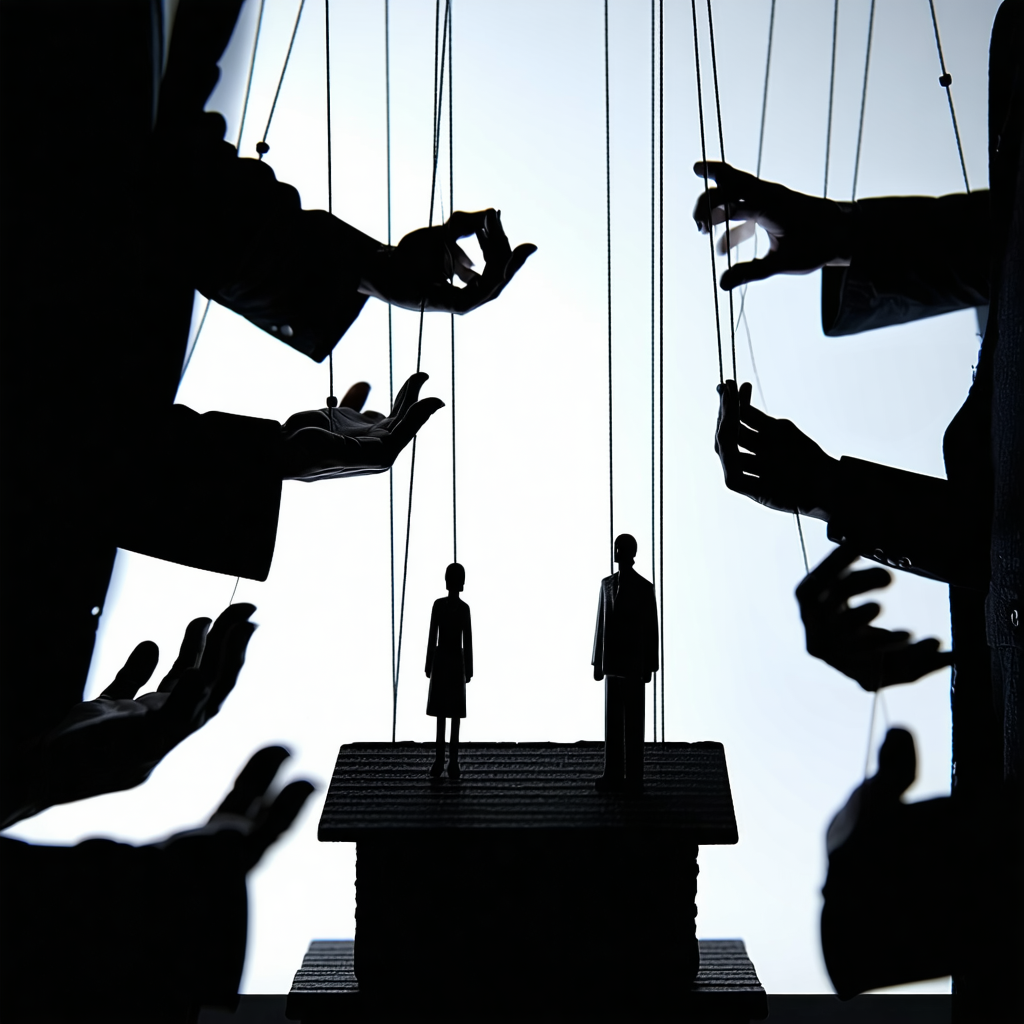
Gaslighting: Distorting Reality
Gaslighting is perhaps the most psychologically damaging tactic in the emotional abuser’s arsenal. It involves deliberately making the victim question their own memory, perception, and sanity. By rewriting history and denying their own actions, abusers create a warped reality where the victim can no longer trust their own judgment.
Example: “That never happened. You’re making things up again.” or “You’re too sensitive, I was obviously joking.” and one I often heard, “You’re overthinking things again.”
When victims repeatedly hear these phrases, they begin to doubt themselves, wondering if they really are misremembering events or overreacting. This creates a fog of confusion where the victim becomes increasingly dependent on the abuser to define what’s real.
Constant Criticism and Humiliation
Emotional abusers systematically undermine their victim’s self-esteem through relentless criticism. What starts as “helpful suggestions” evolves into persistent fault-finding, where nothing the victim does is ever good enough. This may occur privately or, more devastatingly, in front of others.
These usually start out as backhanded compliments. Designed to catch someone off guard, usually someone who already has existing self-esteem issues.
- “You look great for your age.”: This implies the person is expected to look older.
- “You look pretty in this light.”: This implies the person is not attractive in normal light.
- “That outfit is so slimming.”: This suggests the person is overweight.
- “You clean up nice.”: This implies the person looks better when put-together.
This often escalates to more direct statements in private, prior to going out to see friends or family. This subdues the victims mood, often put down to them being unwell, giving an excuse to leave early. Part of the isolation phase of abuse.
Example: An abuser might ridicule their partner’s appearance before going out, saying things like, “Are you really wearing that? Everyone will think I’m with someone who doesn’t care about themselves.”
This steady drip of criticism erodes the victim’s confidence until they believe they truly are incompetent, unattractive, or unworthy of respect. The abuser becomes the authority on the victim’s worth, creating a powerful dependency.
Where this reaches public criticism in front of others such as friends, family or coworkers. This could mean one of two things.
The abuser is inebriated and angry, and the mask drops. This is devastating for the victim, even more so, if witnesses enable the abuser’s behaviour by saying, “Oh they were drunk.” The abuser has painstakingly created this image to all those close to their victim as “Such a nice guy.” Often the victim has fantasised about when it comes out in the open, their loved ones would stand up for them. They’d never allow them to be treated in such a way.
Drugs and alcohol don’t change who a person is, it reveals who they really are. (Not referring to long term addicts with this statement)
The other reason is they’ve set the stage for reactive abuse. They have laid the groundwork for those around the victim to believe they are the problem. They are the abusive one and the abuser is the long suffering partner. They know what will trigger an outburst. This is done to further isolate the victim during the relationship. Or to garner sympathy for the abuser and isolate the victim towards the end of the relationship.
Emotional Withholding and Silent Treatment
By deliberately withdrawing emotional support, affection, or communication, abusers create an atmosphere of unpredictability and fear. The silent treatment is a particularly powerful form of emotional abuse that punishes the victim through isolation and rejection.
Example: After a disagreement, an abuser might refuse to speak to their partner for days, ignoring their presence completely, leaving them in agonizing uncertainty.
This behavior creates intense anxiety as the victim desperately tries to “fix” the situation, often by sacrificing their own needs or apologizing for things they haven’t done. This reinforces the power imbalance, teaching the victim that their emotional well-being is completely dependent on the abuser’s mood.
Isolation and Control
Similar to other forms of abuse, emotional abusers work to isolate their victims from support networks. However, rather than using outright prohibitions, they employ emotional manipulation to achieve this goal.
Example: “Your friend Sarah always makes you upset after you see her. I’m just concerned about how she affects you.” or “Your family doesn’t respect our relationship. If you loved me, you wouldn’t want to be around people who hurt me.”
By framing isolation as protection or love, the abuser cuts off vital lifelines that might help the victim recognize the abuse or gain perspective. The victim becomes increasingly dependent on the abuser for social interaction and emotional support.
The Self-Questioning Paradox
One of the most insidious effects of emotional abuse, particularly gaslighting, is that it leaves victims constantly questioning themselves. “Was I too sensitive?” “Did I misremember that conversation?” “Am I actually the problem in this relationship?” This self-doubt becomes all-consuming and further erodes the victim’s sense of reality.
Yet this very questioning reveals something important that many survivors fail to recognize. I’ve come to believe that:
The sane person questions their sanity, while the insane person does not.
This isn’t just wordplay, it’s a fundamental insight into abuse dynamics. Those who have experienced emotional abuse often wonder if they were somehow the abuser, if they were the problem all along. This self-reflection is actually evidence of the empathy, accountability, and awareness that abusers typically lack.
Abusers rarely question their perspective or behavior. They don’t lie awake wondering if they’re being unreasonable or hurtful. Their worldview, in which they are always justified and others are always to blame, remains unshakable. This absolute certainty in their rightness is what makes their manipulation so effective and devastating.
It’s similar to the Dunning-Kruger effect: those with the least self-awareness often have the most confidence in their judgments, while those with deeper insight carry more doubt.
So if you find yourself reading this article and wondering if perhaps you were the problem in your relationship, that very questioning suggests otherwise. The capacity for self-reflection is one that emotional abusers rarely possess. Your doubt, painful as it is, reflects your humanity, not your culpability.
Recognizing the Signs: Are You Being Emotionally Abused?

In Yourself
The effects of emotional abuse often manifest in the victim’s behavior and thought patterns. You might be experiencing emotional abuse if you:
- Constantly apologize, even for things that aren’t your fault
- Feel like you’re “walking on eggshells” to avoid upsetting your partner
- Second-guess your own perceptions and memory
- Make excuses for your partner’s behavior to friends and family
- Have lost confidence in your decision-making abilities
- Feel worthless, helpless, or like you’re “going crazy”
- Have abandoned hobbies, friendships, or goals that were once important to you
- Feel isolated and dependent on your partner’s approval
In Your Relationship
Certain dynamics in your relationship may indicate emotional abuse:
- Your partner monitors your whereabouts and communications
- They use your insecurities against you
- Your accomplishments are minimized while your mistakes are exaggerated
- Your needs and feelings are dismissed as unimportant
- “Jokes” at your expense are common, but you’re “too sensitive” if you object
- Love and affection are withheld as punishment
- Your partner makes unilateral decisions that affect both of you
- They threaten to leave, harm themselves, or cause other problems if you don’t comply with their wishes
The Long-term Effects: How Emotional Abuse Reshapes the Mind

Created by JD using AI
The damage caused by emotional abuse extends far beyond the relationship. The psychological impact can persist for years, even decades, after escaping the abusive situation. Understanding these effects is crucial for healing.
Complex PTSD and Trauma Response
Prolonged emotional abuse can lead to Complex Post-Traumatic Stress Disorder (C-PTSD), a condition similar to PTSD but specifically caused by long-term trauma in a context where the victim has little control or chance of escape.
Symptoms include:
- Flashbacks and intrusive memories
- Hypervigilance and heightened startle response
- Emotional numbing or disconnection
- Persistent feelings of shame, guilt, and worthlessness
- Self-destructive behavior
- Difficulty regulating emotions
The brain and nervous system adapt to constant threat by remaining in a state of high alert. This survival mechanism, useful during the abuse, becomes maladaptive in safe environments, making it difficult to relax or feel secure even when the danger has passed.
Distorted Self-Perception and Identity Loss
Perhaps the most profound long-term effect is the disruption of identity development. Victims often emerge from emotionally abusive relationships unsure of who they are, what they believe, or what they want.
Years of having their perspectives invalidated and their worth determined by the abuser leads to a fragmented sense of self. Many survivors report feeling as though they lost years of their lives or abandoned their authentic selves to survive the relationship.
This identity disruption makes rebuilding a life after abuse particularly challenging, as survivors must relearn their own preferences, boundaries, and values—sometimes from scratch.
Trust Issues and Relationship Patterns
Emotional abuse fundamentally changes how survivors view relationships. The betrayal of trust by someone who claimed to love them creates deep-seated skepticism about others’ intentions. Many survivors struggle to:
- Form new relationships
- Accept genuine affection without suspicion
- Set healthy boundaries
- Recognize new forms of manipulation or control
- Believe they deserve respectful treatment
Some survivors may unknowingly seek out similar relationship dynamics, as the familiar—even if painful, feels safer than the unknown. Others may avoid intimacy altogether, protecting themselves from potential harm by remaining isolated.
Cognitive Impacts: Decision-Making and Executive Function
Chronic stress from emotional abuse affects cognitive functioning in tangible ways. Survivors often experience:
- Difficulty making decisions (even small ones)
- Problems with concentration and memory
- Reduced problem-solving abilities
- Mental fatigue and brain fog
- Indecisiveness and fear of making mistakes
These cognitive effects can impact professional performance, education, and daily functioning, creating additional challenges for survivors trying to rebuild their lives.
Breaking Free: The First Steps Toward Healing
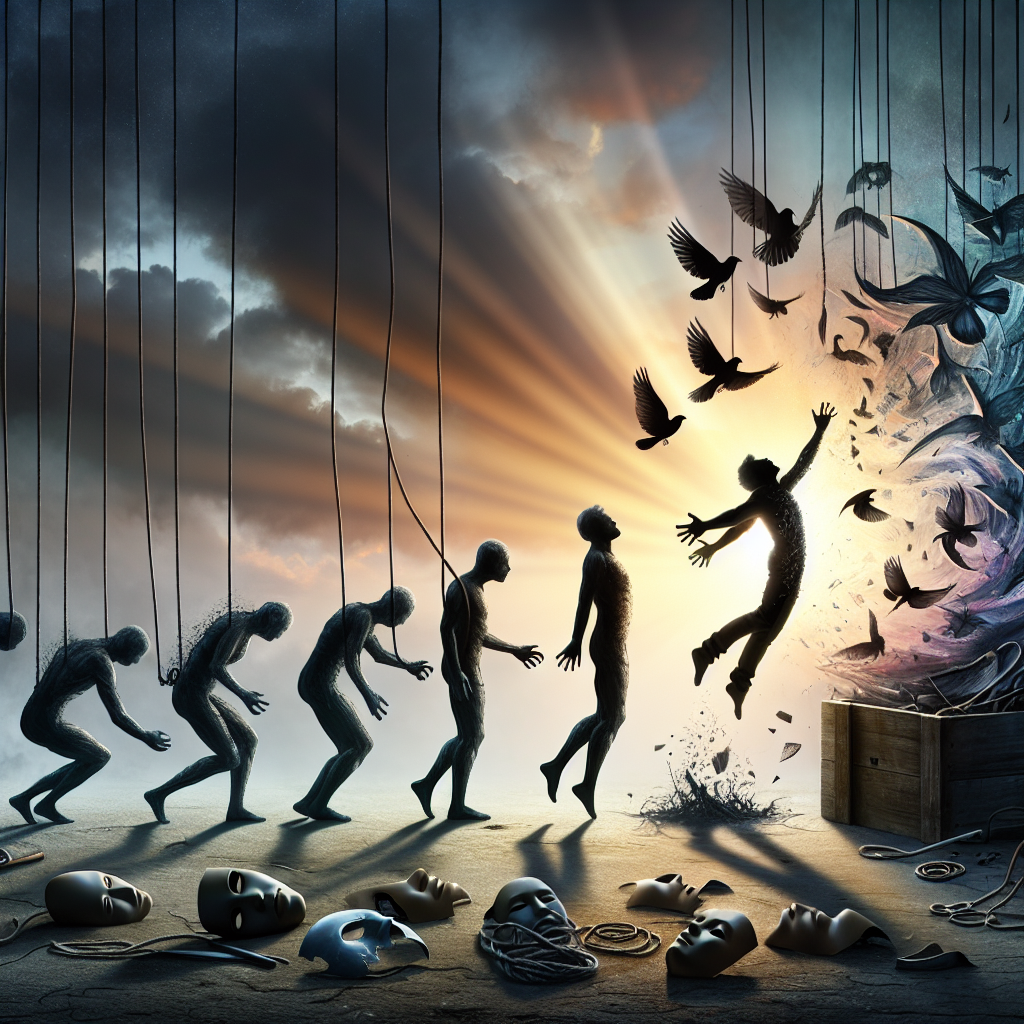
Recognizing emotional abuse is the crucial first step toward healing. If you identify with the signs and effects described above, understand that:
- You are not crazy or too sensitive. Your perceptions and feelings are valid.
- The abuse is not your fault. No one deserves to be emotionally abused, regardless of their actions.
- Recovery is possible. The damage is real, but so is your capacity to heal.
Creating safety is essential. This might mean leaving the relationship or, if that’s not immediately possible, building a safety plan and support network. Connecting with organizations that specialize in domestic abuse can provide crucial guidance and resources.
The Healing Journey: Reclaiming Yourself
Recovery from emotional abuse is not linear. It involves setbacks and breakthroughs, moments of strength and periods of vulnerability. Most survivors benefit from professional support through this process.
Therapeutic approaches that can help include:
- Trauma-focused therapy
- Timeline Therapy™ to process and release emotional pain
- NLP techniques to reframe negative self-perceptions
- Hypnotherapy to address subconscious beliefs formed during the abuse
- Group therapy to connect with others who understand the experience
The goal isn’t just to survive emotional abuse, but to thrive beyond it—to reclaim your authentic self and rebuild a life based on self-worth, healthy boundaries, and genuine connection.
Empowering Through Awareness
Understanding the tactics of emotional abusers and recognizing the impact of their behavior is powerful. It shifts the burden of blame from victim to perpetrator and validates experiences that may have been denied or minimized for years.
If you recognize these patterns in your own relationship, remember that help is available. You deserve to be treated with dignity and respect, and a life free from abuse is possible.
I have a public page on Facebook, as well as a private group to protect members from flying monkeys. Anyone is free to follow the page. You can apply to join the private group, we monitor it for our community’s protection.
Follow me at Be Strong – Coaching. Join the private group at Be Strong – Community.
Additionally, The Abuser’s Playbook series of articles will soon form part of a free ebook resource, offering you a comprehensive guide to identifying and escaping the tactics abusers use. This ebook will be available to all members of the Be Strong community as a tool to support your journey toward healing.
Take the first step by following me at Be Strong Coaching, and together, we can work toward a future of empowerment and strength.
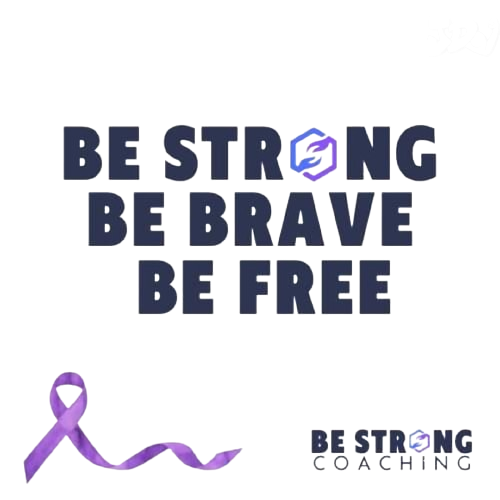
Personal Experiences: When Emotional Abuse Becomes Reality
Throughout this article, we’ve discussed emotional abuse from a theoretical perspective. However, real stories often resonate more deeply than clinical descriptions. Below are my experiences that illustrate how emotional abuse manifests in everyday life. I’ve kept other parties and locations anonymous for their privacy and safety.
Public Humiliation as Control
During a social gathering where friends were engaged in friendly debate and conversation, I was actively participating and guiding discussions, something that comes naturally to me in social settings. When I stepped away briefly to refresh drinks, my partner followed me inside and unleashed a barrage of criticism: “Will you just shut up? You’re so fucking opinionated. No one cares what you think.”
Though friends later contradicted these statements when they noticed my sudden change in demeanor, the damage was done. The evening was ruined, and more importantly, a seed of doubt had been planted. This incident revealed a pattern of control that had been building over five years of our relationship, though it would take two more years before the relationship ended.
This type of public criticism serves multiple purposes for the abuser:
- It immediately silences the victim
- It creates social anxiety about future interactions
- It undermines the victim’s confidence in their social value
- It establishes the abuser’s authority to “correct” the victim’s behavior
Weaponizing Home and Safety
Relationship security extends beyond emotional connection to physical security, particularly the safety of home. Early in relationships, I began establishing a crucial boundary: during disagreements, kicking me out of our shared home was not an option.
This boundary stems from understanding how abusers weaponize shelter. Once someone has been expelled from their home during a conflict, the threat of homelessness looms over every future disagreement. “Will I have a place to sleep tonight if I disagree with her?” becomes an unspoken concern, creating a powerful incentive to avoid conflict at all costs. The home ceases to be a safe space and becomes a tool of control.
For victims of abuse, this tactic is particularly effective because it introduces basic survival concerns into relationship dynamics. When expressing an opinion might result in losing access to shelter, many victims choose silence and compliance.
When Control Tactics Escalate
As emotional control tactics began to fail in one relationship, the situation escalated to physical violence. My partner repeatedly attempted to provoke a physical response, likely hoping I would strike her so she could position herself as the victim. When these provocations failed due to my firm personal boundary against violence, she ultimately became physically abusive herself, following me as I attempted to leave the situation.
The aftermath revealed that family members had witnessed similar patterns with previous partners but hadn’t warned me, highlighting how the “love blinders” phenomenon prevents potential victims from heeding warnings about abusers. When you believe you’re in love with someone (or rather, the persona they’ve carefully crafted), outside perspectives often fall on deaf ears.
This experience offers insight into why warning others about an abuser rarely works: the victim is experiencing a completely different version of the person than others see. The carefully constructed mask shown during the idealization phase creates a cognitive dissonance that makes warnings seem implausible or motivated by jealousy.









